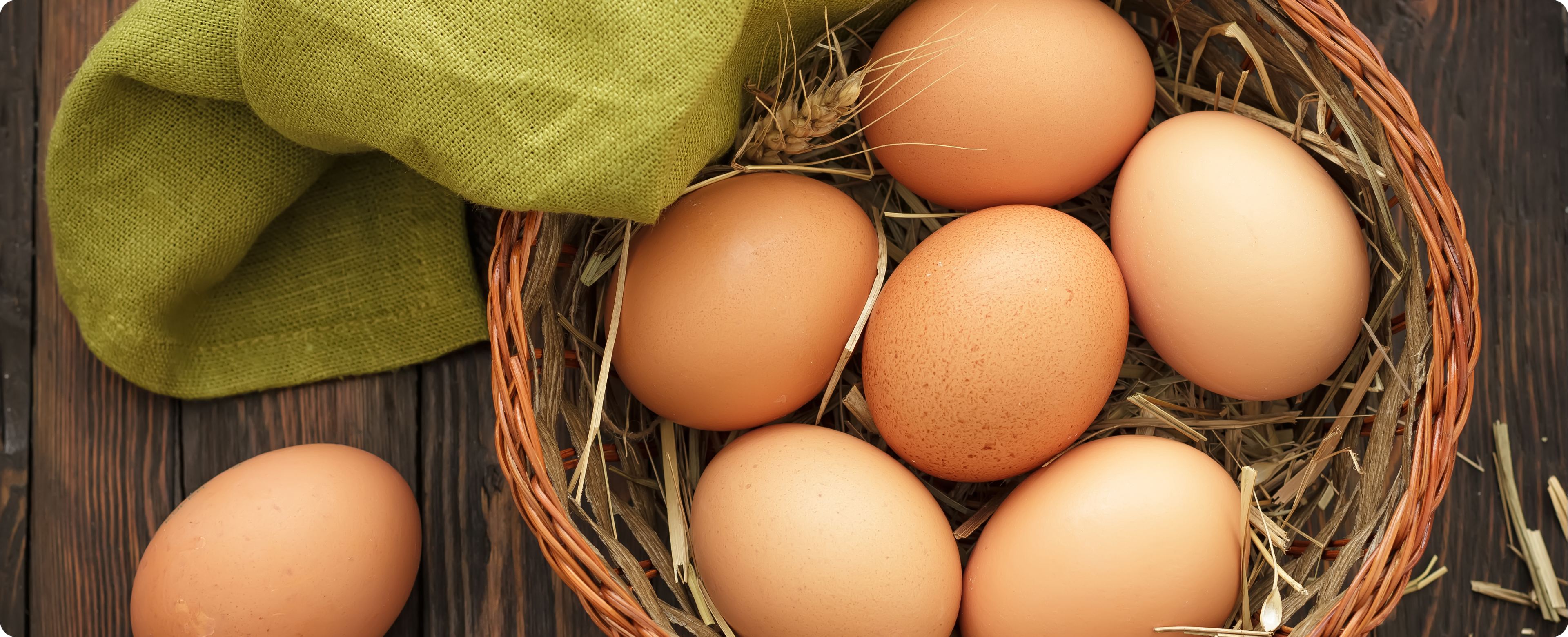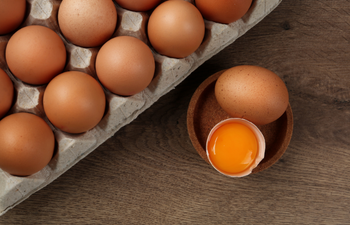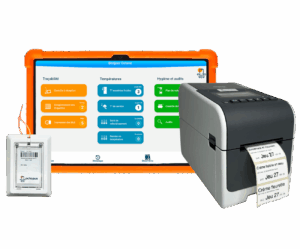Eggs and HACCP: preserve them properly!
Traçabilité
⏳ Temps de lecture : 6 min
? Mis à jour le : 28/08/2024
What are the food safety risks related to the use and storage of eggs? ?
According to the Good Hygiene Practices Guide and HACCP application (GBPH) ?, the leading cause of foodborne outbreaks (TIAC) in France is salmonella. Most of these infections are linked to the consumption of poultry products.
Both inside and outside, eggs present all the risk factors for food poisoning ⚠️. Indeed, the egg (yolk and white) is very rich in nutrients with high nutritional value. This creates an environment that favors microbial growth. ?️
The egg can be contaminated during its formation by a hen carrying ? salmonella or during its passage through a contaminated area ?. Salmonella usually colonizes the shell first, then the inside of the egg if it has a crack. Indeed, the eggshell can contain many germs, including salmonella if contaminated.
In commercial or collective catering and in food trades ? (caterers, pastry chefs, etc.), the use of shell eggs ? is allowed. However, it is mandatory to follow strict hygiene rules to prevent contamination from eggs during storage ? or handling.
It is also important to know that preparations made from raw fresh eggs are strongly discouraged for people with a weakened immune system: babies, pregnant women, etc. ??
Supply and storage of shell eggs
Supply of shell eggs ?
When receiving eggs, it is important to check that they are not dirty (hen droppings on the shell) or cracked. They must be clean and intact ✅ upon delivery; if not, they must be discarded. ?
HACCP method: traceability of shell eggs ?
With Octopus HACCP, you can simply take photos of your traceability labels using your device (mobile or tablet). These are automatically sorted by date and kept for 5 years.
If an eggshell is dirty, how can I wash it? ?

According to regulations, washing eggs is prohibited. When an egg is dirty, you are required to discard it. ?
What are the ideal storage conditions for eggs and egg products?
Regarding the storage of shell eggs, it is important to minimize temperature fluctuations ?. Indeed, the eggshell is porous and not airtight, making the egg very sensitive to temperature changes ?.
You can store them in a cool ❄️ and dry place, but to limit temperature variations, it is recommended to store them in a cold room at a temperature below 3 °C, separated from other sensitive ingredients (fish, raw meat ?, etc.), unpackaged products (such as fruits, vegetables ?, sausages, etc.), and finished products.
For egg products like pasteurized liquid eggs: egg whites, yolks, or whole eggs, the storage temperature ? is indicated on the packaging by the manufacturer and is generally between 0 and 3 °C after opening. ?
If your cold storage units are unreliable or aging, there is a higher risk of significant temperature fluctuations or equipment failure. To protect your stock, Octopus HACCP ? offers wireless temperature sensors for refrigerators and freezers that notify you in case of temperature drops ?.
Indicators of freshness for shell eggs
To know if an egg is fresh, there are two methods to choose from: the date or the water glass test.
The date ? :
- Up to 9 days after laying ?: the egg is considered ultra-fresh.
- From 9 to 28 days after laying: the egg is considered fresh.
Extra-fresh eggs can be used for all preparations using raw eggs (mayonnaise, mousse, tiramisu, etc.)
The water glass test ?: An extra-fresh egg sinks to the bottom of the glass of water, while a less fresh egg begins to float slightly. If the egg floats entirely, it is no longer safe to eat.
Handling shell eggs
As mentioned earlier, the eggshell carries many germs. Hence the importance of following hygiene rules when handling them, such as washing hands ?️ before and after use. It is also recommended to crack the eggs on a flat surface other than the container used for preparation. ?
Egg-based preparations
Cooking eggs
It should be known that the only way to destroy salmonella is heat treatment ?. This explains the term “sensitive preparation” for preparations where a part of the egg remains raw ?: fried eggs ?, poached eggs, or soft-boiled eggs. This also applies to mayonnaise, pastries like chocolate mousse, molten chocolate cakes ?, etc.
That is why it is important to use extra-fresh eggs for raw egg preparations.
At what temperature should egg preparations be stored? ❄️
The storage rules for cooked eggs are the same as for most other ingredients ?, as recommended by the HACCP method.
Hot dishes ? must be kept at +63 °C until serving.
For omelettes on your breakfast buffets, ensure that the temperature of the chafing dishes is maintained throughout service.
If your preparation is intended for cold consumption ❄️ such as floating islands, custard, or pastry cream, you must follow the HACCP rapid cooling rules: cool from 63 °C to 10 °C in less than 2 hours, then store at a maximum of 3 °C ?.
To help you comply with HACCP rapid cooling procedures, Octopus HACCP offers an app that records your time-temperature pairs and alerts you in case of any issues.
How long can egg preparations be stored?
The recommendations from the Good Hygiene Practices Guide – GBPH ? regarding the storage duration for eggs are as follows:
- Hard-boiled eggs in their shells can be stored for 4 days in the refrigerator (T° < +4 °C).
- Preparations intended to be consumed cold ❄️ are rapidly cooled after preparation and then stored in the refrigerator before serving (T° < +4 °C).
- Preparations made with raw shell eggs (mayonnaise, chocolate mousse, tiramisu, etc.) must be stored in the coldest part of the refrigerator (T° < +4 °C) immediately after preparation and consumed quickly, within the same day at most. ?
- Like raw egg preparations, raw egg yolks ? can be stored for 1 day in the refrigerator (T° < +4 °C).
- It is also advised not to keep raw egg whites for more than 1 day in the refrigerator.
Reminder: preparations with raw eggs are not recommended for vulnerable populations.
It is important to respect all sanitary rules to protect your customers and to be confident in case of inspection. Indeed, in the event of a health inspection, the DDPP will require you to destroy products (mayonnaise, bavarois, chocolate mousse, etc.) prepared over 24 hours ago and/or stored above +4 °C, and may issue a formal report.




